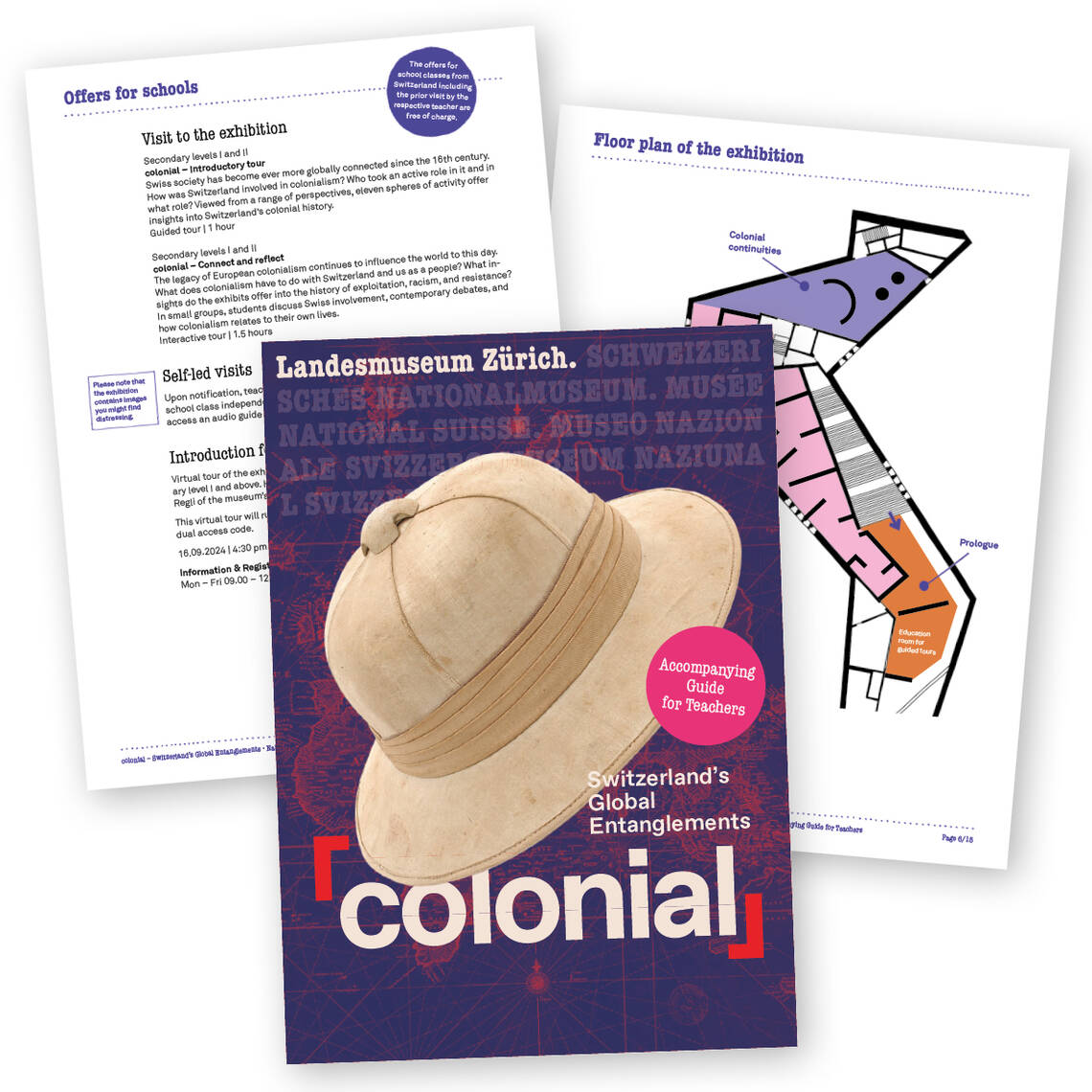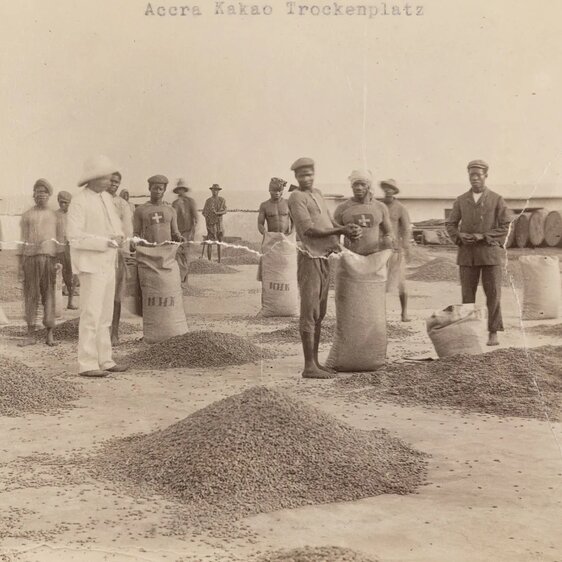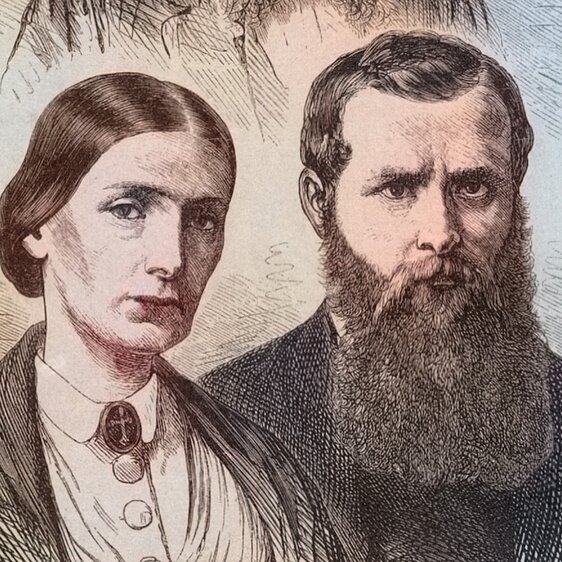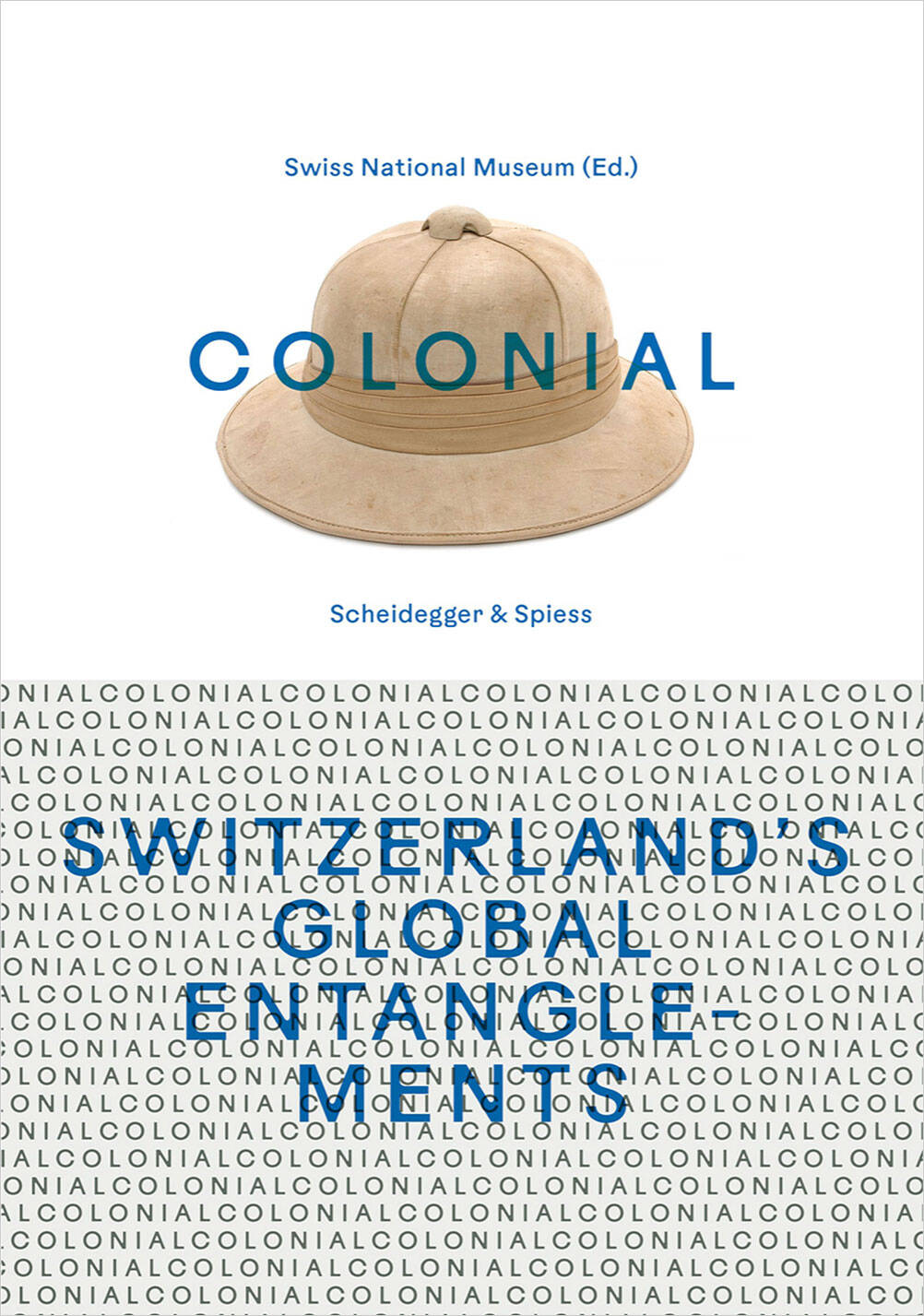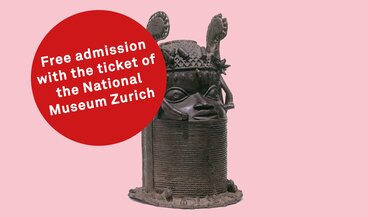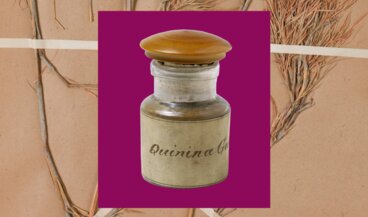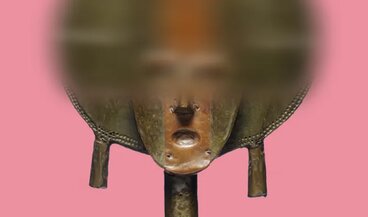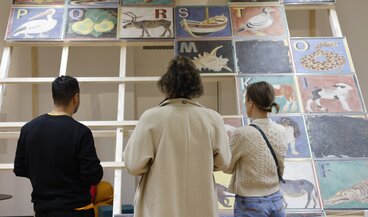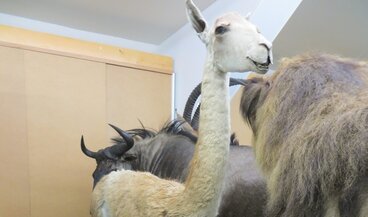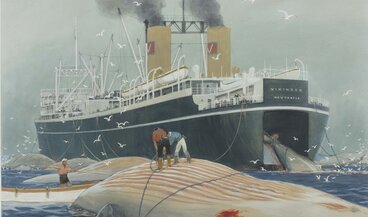National Museum Zurich
| 13.9.2024 - 19.1.2025
The National Museum Zurich is presenting its first ever comprehensive and multi-perspectival overview of Switzerland’s colonial past. It takes the form of an exhibition based on the latest research, and draws on biographies as well as using objects, artworks, photographs and written documents for illustration.
The exhibition comprises two parts. The first part defines eleven themes, with many examples of how Swiss people, businesses and communities were involved in colonialism from the 16th century. The geographical scope covers North and South America through Africa to Asia. A number of Swiss companies and private individuals participated in the transatlantic slave trade and amassed a fortune from trading in colonial products and exploiting enslaved people. Swiss missionaries travelled the world and left Switzerland to found settlement colonies and cultivate supposedly unpopulated land. Others, driven by poverty or a thirst for adventure, served as mercenaries in European armies, undertook colonial conquests and crushed uprisings by indigenous populations. Back home, science played its part in shaping the perception of people in the colonies, in addition to the letters and reports sent from colonial lands. Scientists at the universities of Zurich and Geneva formulated race theories that gained international credence and helped legitimise the colonial system.
The second part of the exhibition addresses the legacy of colonialism and its impact on present-day Switzerland. It reveals the effects of colonialism that still persist – such as global wealth inequality and environmental issues. The main emphasis, however, is on debates of direct relevance to the Swiss people: for example, should street names or monuments to people who were involved in colonialism be altered or knocked down or is that erasing history? Visitors are invited to join the discussion and leave their thoughts at the exhibition.
Researchers from different disciplines have released publications on Switzerland’s colonial entanglements in recent years. Museums have also recognised the significance of the issue, as shown in the exhibitions on display this autumn, for example.
The exhibition at the National Museum Zurich is the first to offer featuring a multi-thematic overview of Switzerland’s history of colonial entanglement. It features numerous voices and considers the issue from the perspective of different regions, action areas and positions. Contributions from artists including Denise Bertschi, Sasha Huber, Chris Pappan, Mathias C. Pfund, Deneth Piumakshi Veda Arachchige and Dom Smaz add valuable insights. The exhibition also incorporates extracts from exchanges with the public and with various experts and actors. An international scientific advisory board oversaw the conceptualisation.
Besides a comprehensive educational programme for schools created with historian Ashkira Darman, the exhibition offers an extensive supporting programme with interactive tours, meetings, panel discussions and focus events in cooperation with ETH Zurich and the Historical Dictionary of Switzerland.
The exhibition will be on display in an adapted form at the Château de Prangins from 27 March to 11 October 2026.

